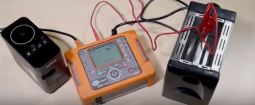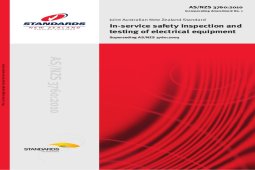
The AlphaPAT Mi2142 is by far the best portable appliance tester (PAT) Metrel has ever made. It’s been a top seller in the UK, NZ & Australian markets since 2004.

Although time moves forward and it has much newer competition today, it remains a good choice if you are looking for a tester that does real safety testing, not just compliance testing.
There’s a big difference here. A real safety testing PAT has the ability to really test the protective earth on Class 1 (earthed) equipment at a high current, ideally 10 or 25 amps. On the other hand, a compliance PAT tester tests with a maximum current of 200 milliamps (0.2 amp). Suppliers often won’t tell the uninformed about this, but rather just say it does an earth test. But a test current of 200 milliamps is almost a pointless test!
This low-current-only ability is like testing life jackets by attaching a 20 kg weight – it might be good for a child’s size but not much point if the wearer weighs 90 kg!
More about the AlphaPAT Mi2142
Firstly, it’s a reliable and cost-effective tester which offers downloadable memory and packs an extensive list of additional testing features including touch leakage current, substitute leakage current and low range PE leakage test.
It is powerful yet lightweight. It can store up to 1000 items (test data and results) in its inbuilt memory, which can be downloaded into the default Metrel PATLink software. It also allows you to scan barcode tags (appliance ID field only. There’s also an option for creating PAT reports, writing invoices and exporting data in different formats when you upgrade to SimplyPats 7 Software (purchased separately).
A Brief History
AlphaPAT got its name from Alphatek, the Metrel distributor in the UK at the time. Around the same time it was introduced in 2004, it was changed at the request of Metrotest NZ and an ingenious 3-digit auditable code was introduced. The code started with either a 1 or a 2 depending on the safety class of the equipment to be tested, i.e. Class 1 earthed or Class 2 double insulated.
This coding system is so simple yet so effective when building an auditable system that it is still used today by Metrel and Sonel – the common denominator here being the trademarked SupaPAT, which is available from Metrotest.
Apart from the coding, other things like the ability to perform powered up 3-Phase testing and an automated label printing were also introduced. When used with the printer, the AlphaPAT became a very quick and auditable real safety PAT testing system.
It was eventually to be superseded by the DeltaPAT, which in our opinion isn’t a patch on the AlphaPAT. The Delta has proven popular but most people using the Delta PAT are unaware it is really a compliance only PAT, and those selling it likely just don’t care!
Pros
In many respects, when it was released onto the NZ and AU market, the AlphaPAT was ahead of its time. Even today, there are only a few devices like the AlphaPAT that offers 3-phase appliance testing compatibility – not even big brands like Megger!
The AlphaPAT can perform various auto tests suited for electrical appliances of different types and construction classes. It is well built and mostly easy to work on, unlike another brand starting with an S, which shall remain anonymous. We like the fact that there’s no need to squeeze it in a vice to get it back together.
Calibrations and adjustments are generally easy. Some AlphaPATs tend to drift but usually not between calibrations.
Drawbacks
Admittedly, the AlphaPAT is not perfect. For one, its alphanumeric keypad makes data entry a bit of a drag. This is arguably the biggest reliability issue which is fortunately very simple to fix – you just replace all 23 switches with a better quality switch and problem is solved! Interestingly, the manufacturer never acknowledged the problem even when it became very obvious. Apart from the switches, it has only the normal common part failures like relays, transformers and other electronic components.

To resolve this inherent issue, Metrotest developed an after-market modification whereby another PCB was installed internally to support a QWERTY keyboard.
The fact that the AlphaPAT cannot do the required RCD testing in NZ and AU is another downside. Moreover, the tester downloads via a RS 232 port, which many modern computers don’t have anymore.
Despite all these limitations, there are still multiple users out there with a hundred plus AlphaPATs – we know of one company that has close to 400 of these testers still in use! So we suspect that they’ll still be around for a while!
Final Thoughts
Summing up, the AlphaPAT is probably Metrel’s best PAT. It joins the list of the best PATs ever built – by any manufacturer!
Metrotest haven’t had more than a handful written off as “can’t be fixed” and, considering their age, that’s pretty impressive.
Should you consider another comparable tester, we believe the best real safety testing PAT alternatives would be the EasiPAT 10, the Alpha SupaPAT and the Ipat SupaPAT. The latter two both draw their DNA from the AlphaPAT and are leading the market of real safety testing devices.
Finally, it’s time to give it a score from a scale of 1 to 10, with 10 being the highest:
- When it was first released in 2004: 8
- How it compares now to other PATs on the market: 7
Test well and stay safe!
For more information about safety, click here.








